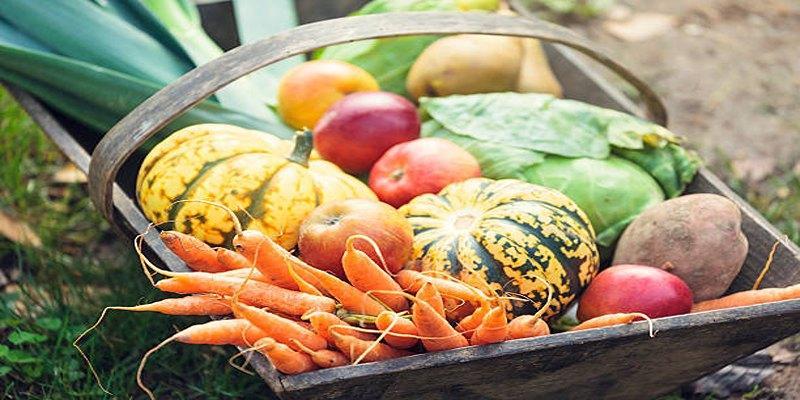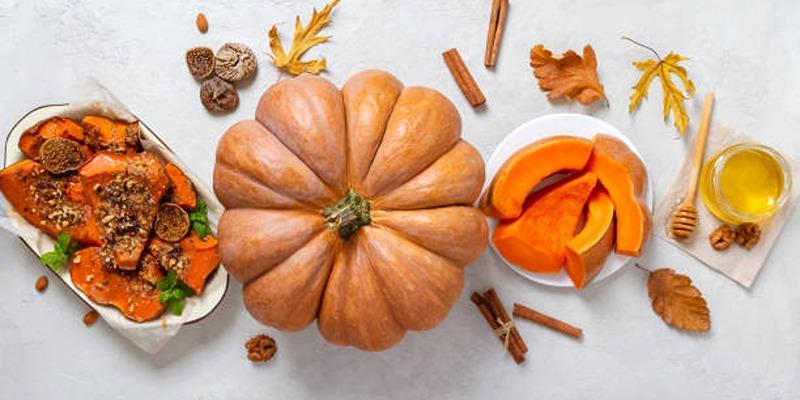Fall is the season of vibrant colors, crisp air, and a bounty of delicious produce. From the sweetness of persimmons to the versatility of pumpkins, autumn’s harvest offers endless possibilities. Whether you’re cooking, baking, or decorating, these seasonal treasures bring warmth and flavor to every home. Discover how to make the most of fall’s finest!
Why Are Fall Harvests Special?

In comparison to the light and juicy fruits of summer, the fall produce is usually hearty, very colored, and full of nutrients. Low temperatures enable the agricultural products to be raised at a slow rate, which concentrates flavour, making them sweeter than usual. This will produce not only the delicious foods performing their purpose of supplying energy and nourishment that one requires in preparation to the winter but also delicious foods.
Other than nutrition, fall harvests have cultural significance. In most customs, they become an occasion to take a break, enjoy the abundance of the earth and spend time with people they think of. Autumn sampling is not only on the plate, but speaks to warmness, family and group.
Pumpkins: The Icon of Autumn
Pumpkins are the first consequence that involves fall. Their rich orange light adorns and decorates markets, holiday tables and porches. Pumpkins are however-much more than festive adornments, pumpkins are also powerhouses of nutrition and have amazing versatility.
- Nutritional worth: Pumpkins are also quite rich in beta-carotene, which is antioxidant helping in maintaining eye health and in building up immune system.
- Food Possibility: Pumpkin puree can be used as the base of pies, soups, breads and muffins. Salads, pastas, or grain bowls can be taken to the next level with roasted pumpkin rectangles and pumpkin seeds can be used as the perfect crunchy and nutrition starts up to the snacks and baked items.
- Storage Tips: Whole Pumpkins can be stored in their dry cool environment within weeks and maybe a month.
Persimmons: A Hidden Autumn Jewel
Periwinkles are rare but are one such fruit worthwhile especially during the fall. Their honeyed sweetness and soft glossy skins smooth with the best of the season.
- Varieties: Fuyu and Hachiya are the two large varieties of persimmon. Fuyu persimmons are consumed in their firmness similar to apples and Hachiya persimmons should be allowed to soften in order to produce the sweetness.
- Health Facts: Persimmons are antioxidants, vitamin c and other important minerals like manganese. They reinforce everyday heart health, digestion and act as a source of natural lasting energy.
- How to Eat: Crisp Fuyu slices go perfectly with a green salad shared with cheeses, the soft flesh of ripe Hachiya persimmons makes an excellent smoothie, candied cake or just served with a spoon.
Apples: The Quintessential Fall Fruit
There is no apple that would as well describe the autumn. Their harvesting season has an astonishing diversity, including bitter Granny Smith up to honey crisp and Honeybook-smelling Fuji.
Highly fiber and vitamin C, apples are healthy and support their immune health and improve the digestive system. Their cooking applications are almost limitless- it can be baked in pies, boiled in sauces, squeezed into cider or eaten in its fresh state. In a cool environment with proper storage, apples can be kept crisp weeks and, therefore, it is one of the most steadfast investments of fall.
Squash: A Diverse Autumn Classic
Fall not only brings pumpkins, but also a range of bright brood of squashes. All varieties are unique in flavor and consistency that can be incorporated into recipes of various types.
- Butternut Squash: Rich, with a little sweetness and perfect addition to soups and purees.
- Acorn Squash: Squash has a nutty taste, and is frequently roasted with herbs or cooked inside grains.
- Delicate Squash: Despite its convenience and the ability to slice right through its skin thereby roasting it, it is very tasty.
The types of squash contain a significant amount of protein in form of vitamins A and C, potassium, and dietary fiber. Nor do they go to waste as they store well thus being enjoyed by the family during the winter thanks to their nutritional quality.
Root Vegetables: Earth’s Autumn Treasure
Root vegetables are plants which grow in autumn days and gain sweetness and depth when the temperature is lower. The most celebrated include, carrots, beets, turnips, parsnips, and sweet potatoes.
These vegetables contain slow digesting carbohydrates and they would be great in the cold seasons since your body needs energy. They are roasted to bring out the natural sweetness in them and soups and stews bring out the hearty nature of the product. In addition to their taste, root vegetables provide the much-needed minerals such as potassium and magnesium and are therefore, reassuring and healthy.
Grapes and Berries of the Season
Although most people consider grapes as a summer fruit, most time they are at their best during early autumn. With the big use-distinctive flavor recalling grape, concord type often turns into juices, jam, and holiday fries.
Cranberries do also come in season bringing the tart taste which compensates both sweet and savory meals. Antioxidant-loaded, cranberries are as well as good to eat they add autumnal and holiday festive color to the table.
Seasonal Nuts: A Source of Warmth and Energy
Walnuts, pecans, chestnuts and other nuts are grown in the fall, provide a great source of edible nutritious fats, protein, and minerals. More than a source of nutritious food, they are a classic ingredient of the autumn meal.
Nuts toasted are warming dishes in cold weather and those cut into fine slices add flavor to bread and cookies and other savory meals. When chestnuts are roasted, they develop a rich, warm aroma and flavor that perfectly captures the holiday spirit.
Making the Most of Fall Produce
To experience the harvest truly you will want to consider the following (simply but useful) practices:
- Shop Local and Seasonal: Local orchards or happen to be farmers, offer the freshest of produce which is usually picked just a few hours before.
- Halve later: Methods to freeze, can and dry are ages old means of making the bounty of the fall endure longer.
- In every day food: Fall foods such as pumpkin soups, apple crisps, persimmon salads and roasted squash are used to a delight.
The Cultural and Emotional Connection

Fall harvests do not only aim at nutrition. In most cultures, this period has traditional symbolization of thanksgiving, feast, and agenda to future. The rhythms of the harvest are usually associated with festivals, meetings, feasts of the community.
This aspect of culture is why the fall produce is even more enjoyable. A pumpkin is not just an iced biscuit, it represents something warm and home-based. Even a small account of walnuts eaten at a party can be a reminder of fellowship and cheerfulness of the season. These associations make ordinary foods into memories.
Conclusion
Fall harvests are not merely a produce but a fall harvests are a measure of abundance, gratitude and connectiveness. Each one offers different flavours, nutritional value and cultural significance to the season, considering the presence of pumpkins, persimmons, apples, squash, root vegetables, grapes, cranberries and nuts. We celebrate the abundance of the earth’s harvest and embrace its richness, which we now weave into our meals and traditions—thus sustaining ourselves and our households, rooted in autumn’s inspiring values.












